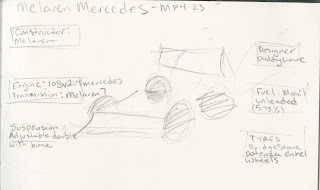IDEA 1
Lewis Hamiltons' 2008 Brazilian F1 Grand Prix win to clinch the seasonal championship as the youngest F1 racer to win the title.This race imparticular has been noted as the #1 most epic race because of how close the race was down to the last lap, to the last corner. The weather was almost impossible to predict and tires were switched from wet to dry alternating throughout the race costing critical seconds on the clock. Throughout the season Hamilton had been plaigued by penalizations but ultimately he would emerge victorious on the score board. Until the last and final race, Hamilton only needed to finish in 5th place to clinch the title.
I would like to observe Lewis Hamiltons last race at 2008 Grand Prix in Brazil to go with a magazine but i have not settled, and i am looking for appropriate media for the infographic
Infographic Example-bottom of page
IDEA 2-
My second idea is to observe the boxing stats of mexican boxer Saul canelo alvarez. His current record is 47-1, sucumbing only to Floyd Mayweather. Recently Canelo Alvarez has dominated over opponent Amir Khan. I would like to do a promotional poster about Canelos' fight with Kahn and career percentages.
Compubox Historical Review
Canelo & Amir Stats and info preview
IDEA 3-
My third idea is to do a data visualization of the shear power of nuclear weapons using scale and energy graphs. This would be a cool article to go along with a NewYork Times article depicting worldly conflicts such as the likes of North Korea or whatever ISIS got their hands on a nuke in the black market.
Atomic Data Visualization
New York Times Article
LUCKY WINNER....
I think that all three ideas are pretty strong in terms of being able to visualize data. But I think I'm going to choose the Formula Racing project. I am the most familiar with the racing topic because I play a lot of Gran Turismo and I also share the desire to shed seconds off my lap time every run.
PROJECT STATEMENT
Lewis Hamilton has had a very sucessful career racing for Mclaren. Ambitiously being adopted by the racing company at a very young age, he has made an impact on the professional racing league as becoming the youngest champion in the 2008 season.Focusing on Lewis Hamiltons' 2008 career stats and the final Brazil Gran Prix, Id like to do a data visualization for the F1 official website.
McLaren_MP4-23
Lewis Hamilton Career
2008 Formula Season
CLIENT
FORMULA1







